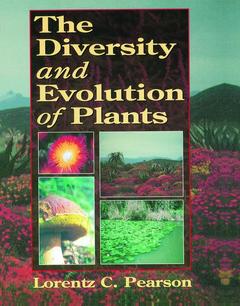This exciting new textbook examines the concepts of evolution as the underlying cause of the rich diversity of life on earth-and our danger of losing that rich diversity. Written as a college textbook, The Diversity and Evolution of Plants introduces the great variety of life during past ages, manifested by the fossil record, using a new natural classification system. It begins in the Proterozoic Era, when bacteria and bluegreen algae first appeared, and continues through the explosions of new marine forms in the Helikian and Hadrynian Periods, land plants in the Devonian, and flowering plants in the Cretaceous. Following an introduction, the three subkingdoms of plants are discussed. Each chapter covers one of the eleven divisions of plants and begins with an interesting vignette of a plant typical of that division. A section on each of the classes within the division follows. Each section describes where the groups of plants are found and their distinguishing features. Discussions in each section include phylogeny and classification, general morphology, and physiology, ecological significance, economic uses, and potential for research. Suggested readings and student exercises are found at the end of each chapter.




